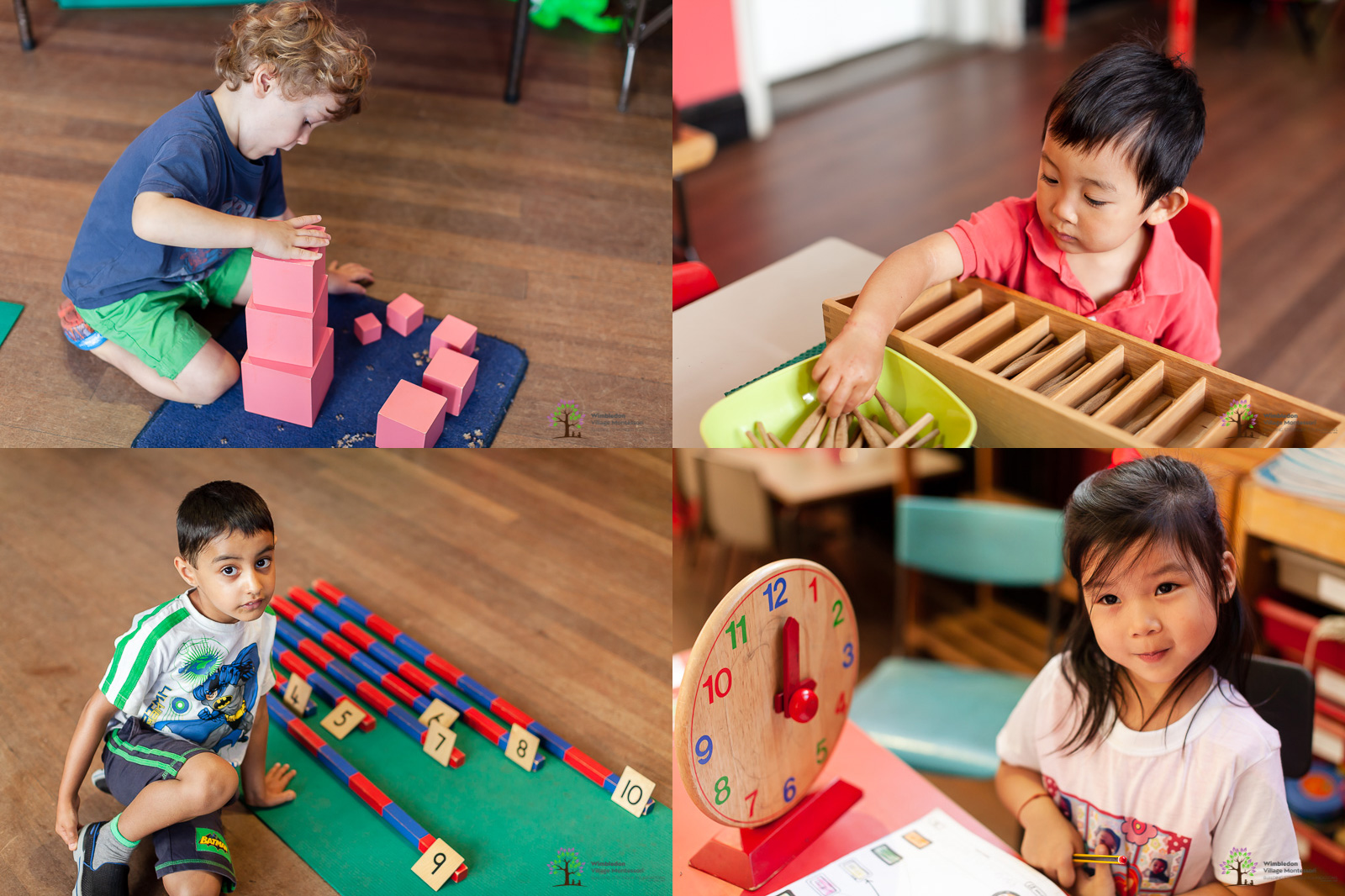
Montessori Education
Montessori education is a method of schooling that focuses on personal development rather than exams produces more mature, creative and socially adapt children.
Psychologists in the U.S. found that across a range of abilities, children at Montessori schools outperformed those given a traditional education. Five-year-old Montessori pupils were better prepared for reading and maths, and 12-year-olds wrote significantly more creative essays using more sophisticated sentence structures.
Some of the biggest differences were seen in their social skills and behaviour. Montessori children displayed a greater sense of justice and fairness, interacted in an emotionally positive way, and were less likely to engage in rough play during break times.
Montessori Teaching in Practice
The Montessori Materials Teaching Equipment
Unique to the ‘Montessori Method’ is the equipment used to teach and guide the children. This equipment is used in approved Montessori settings around the world.
Practical Life
Practical Life is generally the first area a child is exposed to in a Montessori setting as it serves as a common ground between nursery and home. The child is attracted to Practical Life because the activities are the same everyday activities the child sees at home.
Practical Life activities are the foundation for all other areas in the nursery environment. For instance, tonging beads strengthens the pincer grip, which is used in writing in the Literacy section of the school.
The exercises of Practical Life help the child to master his/her skill of movement. On perfection of a specific movement, a child will feel satisfaction and an increase in both self-confidence and independence.
Practical Life, Transferring – These activities encourage the child to refine and develop their gross and fine motor skills. These activities range from simple to more complex, for example from transferring from one bowl to another with a spoon, to more complex, for example using tweezers to pick up and transfer small beads.
Sensorial
We experience the world through our senses; we cannot fully experience the beauty of a flower without sight – to see its form and colour, and without smell – to breathe its sweet fragrance.
All of the Sensorial materials are designed in such a way as to help the child’s mind to focus on one particular quality. For example, the Tactile Boards focus on texture and the Pink Tower focuses on size. The Sensorial materials bring order and system to the sensorial impressions a child has already received and is still receiving.
These activities allow children to develop and refine logical thinking skills. Concepts such as big, small, broad, narrow are learned through practical use of the materials. Each activity generally focuses on one sense in order that the concept being learned is more apparent, for example the cubes in the pink tower vary only by size and children learn to build them from the biggest to the smallest. Colours and shades of colour are learned using wooden tablets all of the same shape and size.
Maths
Learning mathematical concepts in a Montessori setting begins concretely and progresses towards the abstract. Order, coordination, concentration, and independence are developed by the child using these materials. Early Montessori maths materials introduce sets of one to ten which prepare the child for counting and teaches the value of quantity. Children begin to associate numeral and quantity with number rods and number cards. Spindle boxes, cards and counters, the short bead stair, reinforce the ability to count from one to ten.
The children are introduced to the decimal system using the golden beads. The beads represent units, tens, hundreds and thousands. The size of the beads corresponds with the value of these numbers. Children work with early addition using the small number rods, short bead stair and addition strip board. These materials provide the children with a concrete representation for addition problems.
Language
Language is unique to human beings and distinguishes us from animals. Through language we experience emotion. Limited language limits relationships, if you cannot express your needs and feelings, your relationships will always be limited.
We need to increase the child’s vocabulary so that they can express themselves freely. The richer the language area in the Montessori environment, the richer the language in the child. A child with good verbal skills will find reading and writing easier.
The child’s language competence is improved through:
- Stories and poems
- Access to books
- Rhymes and jingles
- Action songs and finger play songs
- Question and answer games
- Verse reading
- Singing
- Speaking and listening
- Matching cards
We use a phonetic approach to reading and writing. Letters are pronounced using sound. We want the child to grasp that each letter has a sound. The child ‘builds’ words by breaking words down into these sounds.
Cultural Area
The Cultural area of the Montessori nursery covers a variety of subjects. Geography, Science, Botany, Zoology, and History are included. Art and Music are also considered a part of the Cultural area of the classroom. The Montessori cultural area is the ‘heart’ of the Montessori nursery and links to the other areas of the nursery.
The cultural materials are first presented as a whole and then broken down into smaller parts. For example, we look at the world as a whole and then break it down into continents. The child is always given a concrete representation of new work before moving on to more abstract representations. If a child has a keen interest in something, we follow the child’s lead and supply them with exercises to accommodate that interest.
